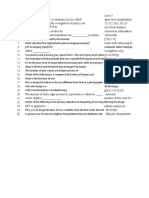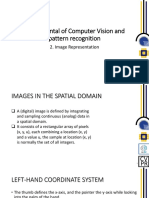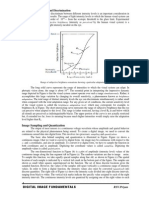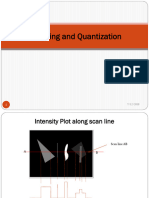0% found this document useful (0 votes)
85 views32 pagesLecture 04
The document discusses digital image fundamentals, including image sampling and quantization as well as different interpolation methods. It explains that spatial resolution refers to the smallest discernible detail in an image, while intensity resolution refers to the smallest change in intensity levels. Common interpolation methods like nearest neighbor, bilinear, and bicubic interpolation are used to estimate pixel values during operations like zooming and rotation. Bilinear interpolation uses a weighted average of pixels in the nearest 2x2 neighborhood to estimate values at unknown pixel locations.
Uploaded by
MaHedy AL HaSanCopyright
© © All Rights Reserved
We take content rights seriously. If you suspect this is your content, claim it here.
Available Formats
Download as PDF, TXT or read online on Scribd
0% found this document useful (0 votes)
85 views32 pagesLecture 04
The document discusses digital image fundamentals, including image sampling and quantization as well as different interpolation methods. It explains that spatial resolution refers to the smallest discernible detail in an image, while intensity resolution refers to the smallest change in intensity levels. Common interpolation methods like nearest neighbor, bilinear, and bicubic interpolation are used to estimate pixel values during operations like zooming and rotation. Bilinear interpolation uses a weighted average of pixels in the nearest 2x2 neighborhood to estimate values at unknown pixel locations.
Uploaded by
MaHedy AL HaSanCopyright
© © All Rights Reserved
We take content rights seriously. If you suspect this is your content, claim it here.
Available Formats
Download as PDF, TXT or read online on Scribd
/ 32





















































































